Prevention and Management of Pressure Ulcers in Healthcare Settings
VerifiedAdded on 2023/06/16
|16
|1546
|439
AI Summary
This assignment focuses on the prevention and management of pressure ulcers in healthcare settings. It covers the causes, symptoms, and standard evaluation methods. It also discusses sampling methods, data collection, and data analysis. The use of evidence-based practice methods such as the Braden score is emphasized.
Contribute Materials
Your contribution can guide someone’s learning journey. Share your
documents today.
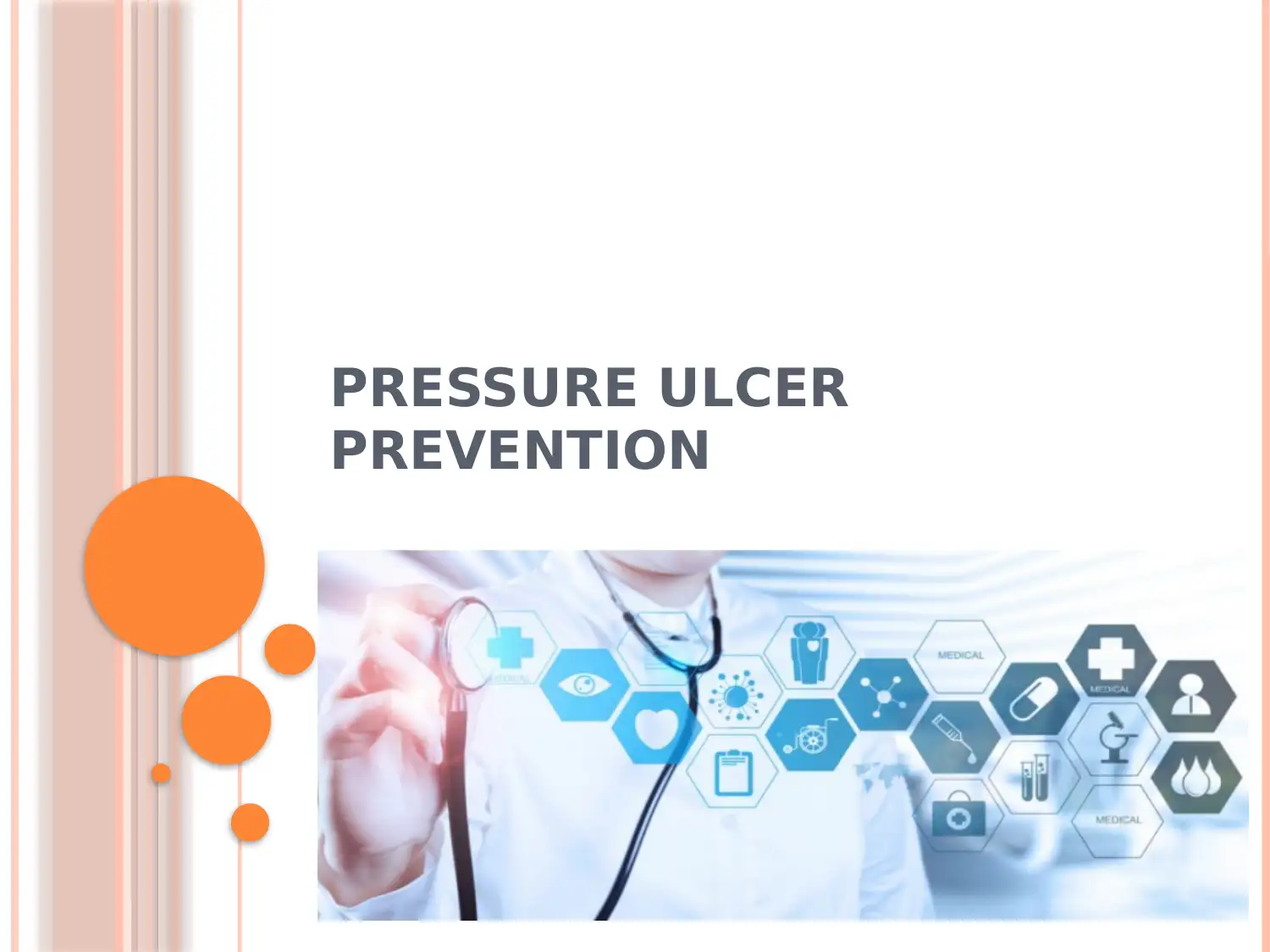
PRESSURE ULCER
PREVENTION
PREVENTION
Secure Best Marks with AI Grader
Need help grading? Try our AI Grader for instant feedback on your assignments.
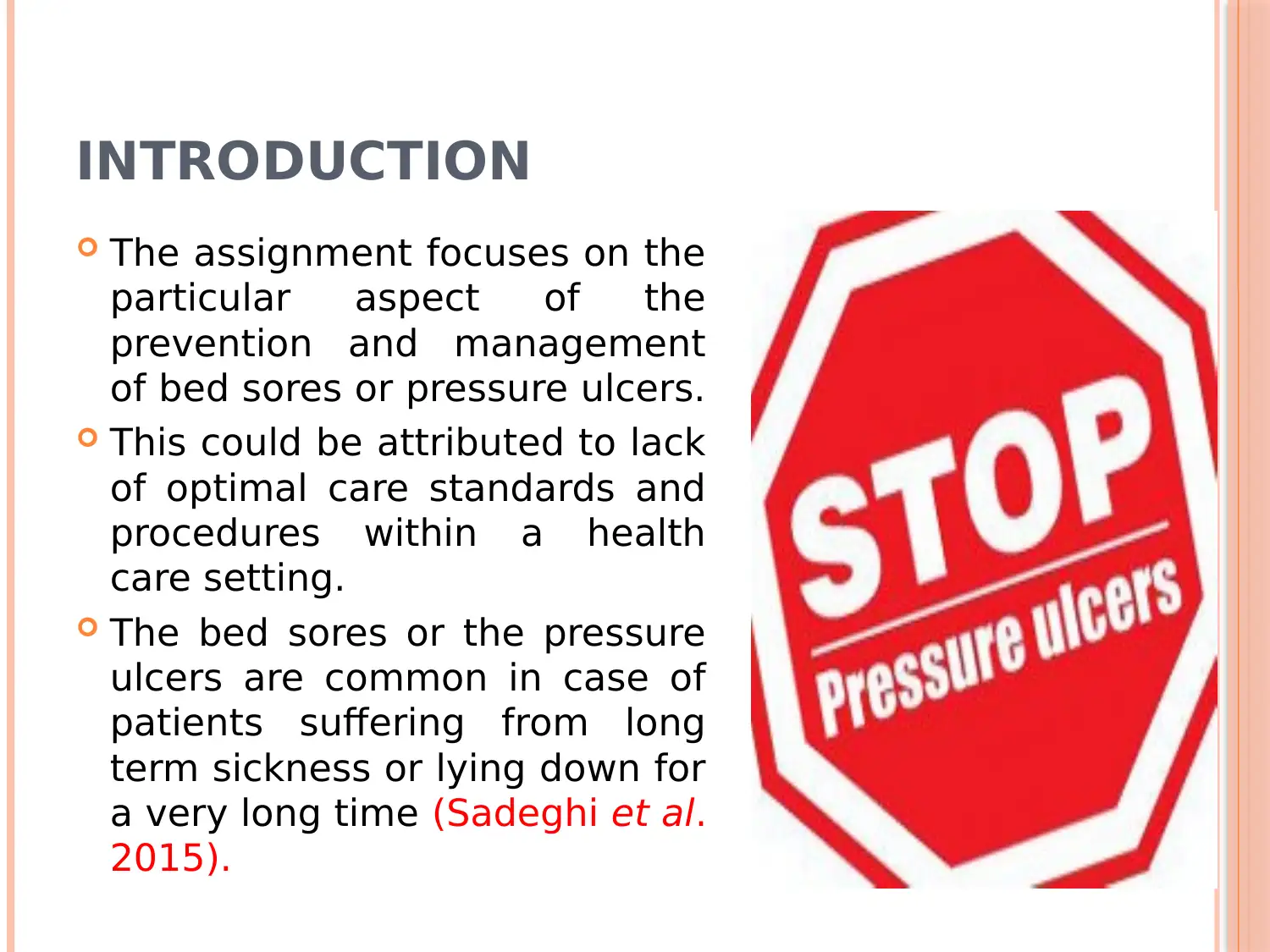
INTRODUCTION
The assignment focuses on the
particular aspect of the
prevention and management
of bed sores or pressure ulcers.
This could be attributed to lack
of optimal care standards and
procedures within a health
care setting.
The bed sores or the pressure
ulcers are common in case of
patients suffering from long
term sickness or lying down for
a very long time (Sadeghi et al.
2015).
The assignment focuses on the
particular aspect of the
prevention and management
of bed sores or pressure ulcers.
This could be attributed to lack
of optimal care standards and
procedures within a health
care setting.
The bed sores or the pressure
ulcers are common in case of
patients suffering from long
term sickness or lying down for
a very long time (Sadeghi et al.
2015).
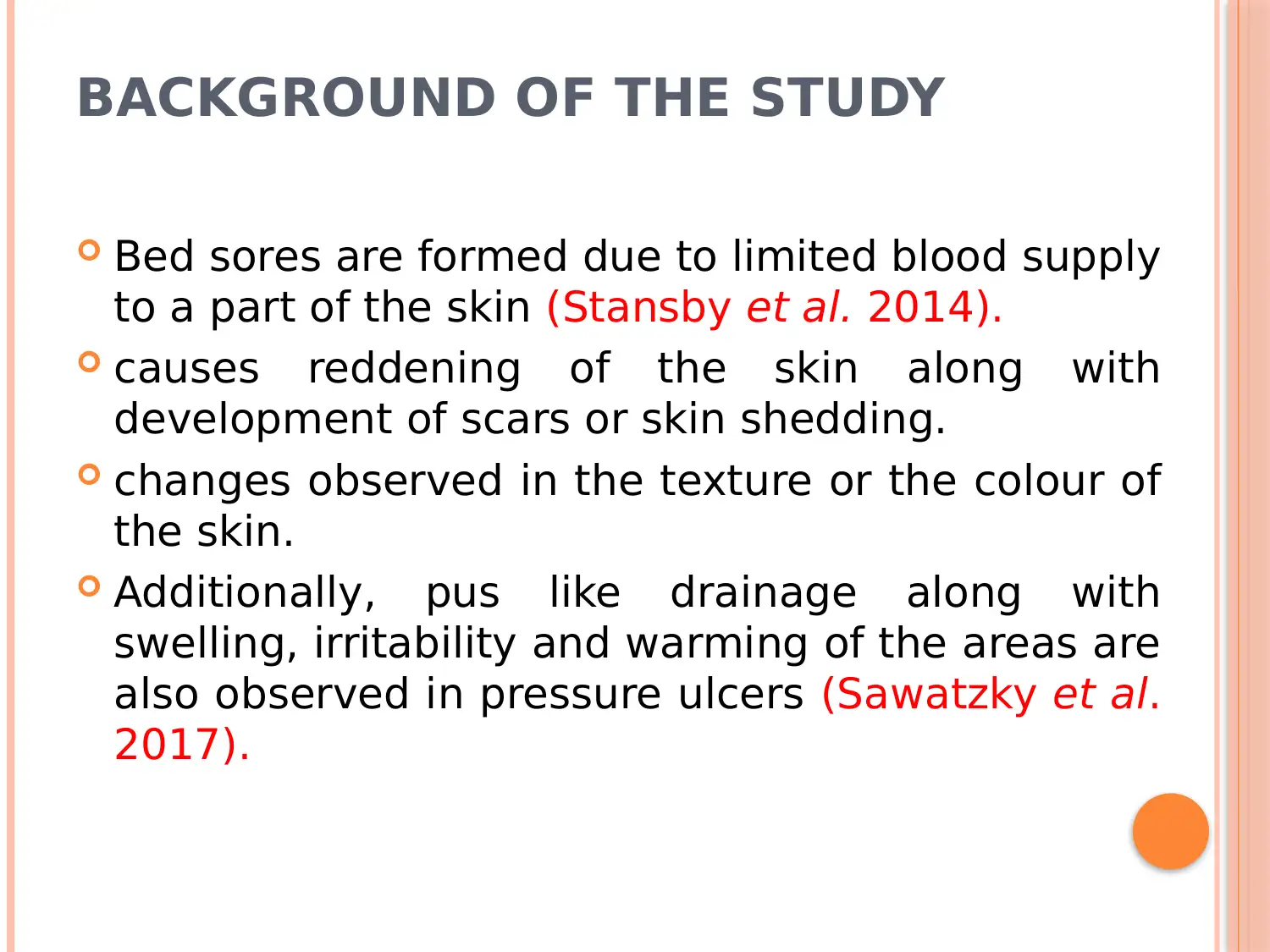
BACKGROUND OF THE STUDY
Bed sores are formed due to limited blood supply
to a part of the skin (Stansby et al. 2014).
causes reddening of the skin along with
development of scars or skin shedding.
changes observed in the texture or the colour of
the skin.
Additionally, pus like drainage along with
swelling, irritability and warming of the areas are
also observed in pressure ulcers (Sawatzky et al.
2017).
Bed sores are formed due to limited blood supply
to a part of the skin (Stansby et al. 2014).
causes reddening of the skin along with
development of scars or skin shedding.
changes observed in the texture or the colour of
the skin.
Additionally, pus like drainage along with
swelling, irritability and warming of the areas are
also observed in pressure ulcers (Sawatzky et al.
2017).
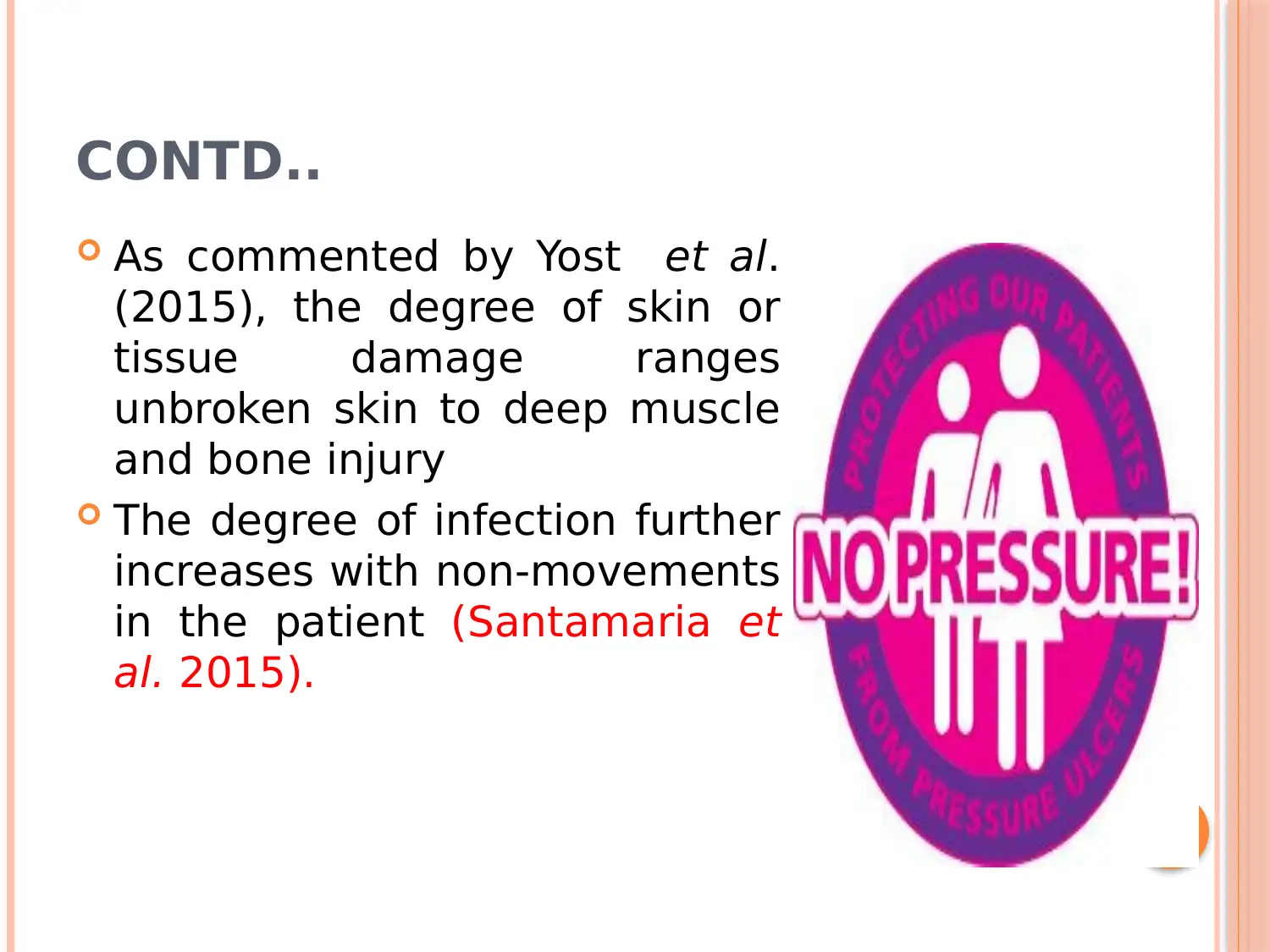
CONTD..
As commented by Yost et al.
(2015), the degree of skin or
tissue damage ranges
unbroken skin to deep muscle
and bone injury
The degree of infection further
increases with non-movements
in the patient (Santamaria et
al. 2015).
As commented by Yost et al.
(2015), the degree of skin or
tissue damage ranges
unbroken skin to deep muscle
and bone injury
The degree of infection further
increases with non-movements
in the patient (Santamaria et
al. 2015).
Secure Best Marks with AI Grader
Need help grading? Try our AI Grader for instant feedback on your assignments.
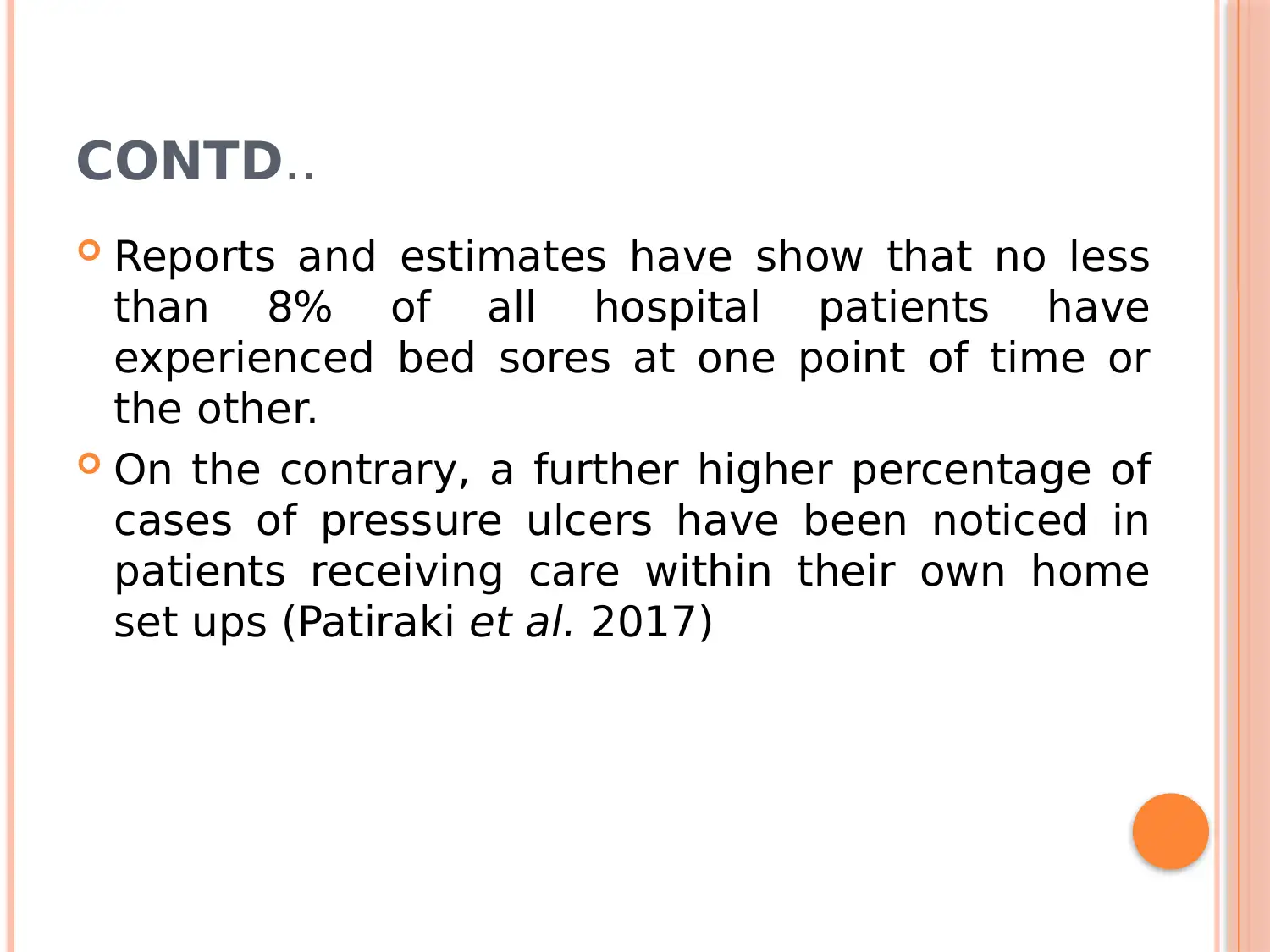
CONTD..
Reports and estimates have show that no less
than 8% of all hospital patients have
experienced bed sores at one point of time or
the other.
On the contrary, a further higher percentage of
cases of pressure ulcers have been noticed in
patients receiving care within their own home
set ups (Patiraki et al. 2017)
Reports and estimates have show that no less
than 8% of all hospital patients have
experienced bed sores at one point of time or
the other.
On the contrary, a further higher percentage of
cases of pressure ulcers have been noticed in
patients receiving care within their own home
set ups (Patiraki et al. 2017)
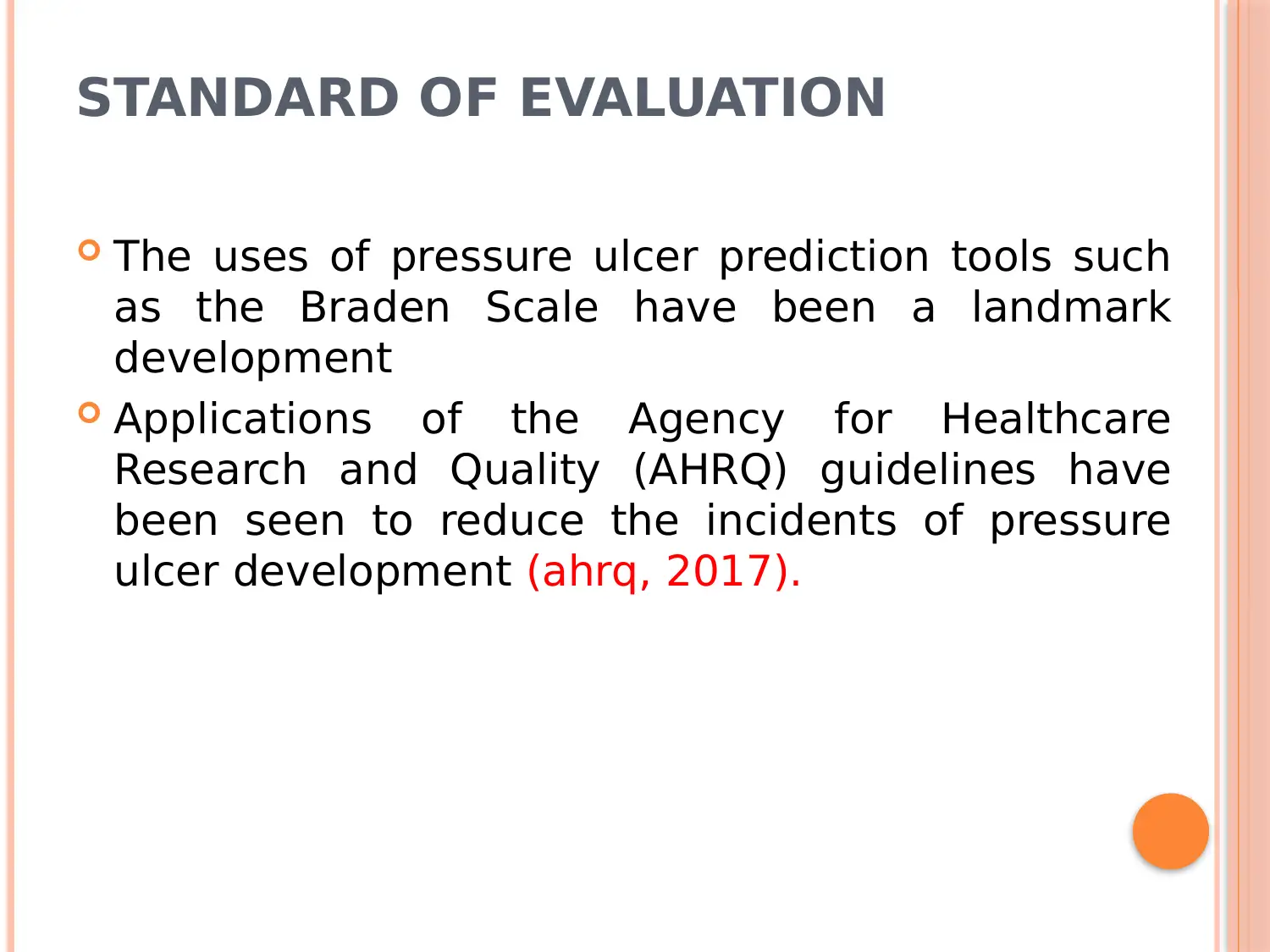
STANDARD OF EVALUATION
The uses of pressure ulcer prediction tools such
as the Braden Scale have been a landmark
development
Applications of the Agency for Healthcare
Research and Quality (AHRQ) guidelines have
been seen to reduce the incidents of pressure
ulcer development (ahrq, 2017).
The uses of pressure ulcer prediction tools such
as the Braden Scale have been a landmark
development
Applications of the Agency for Healthcare
Research and Quality (AHRQ) guidelines have
been seen to reduce the incidents of pressure
ulcer development (ahrq, 2017).
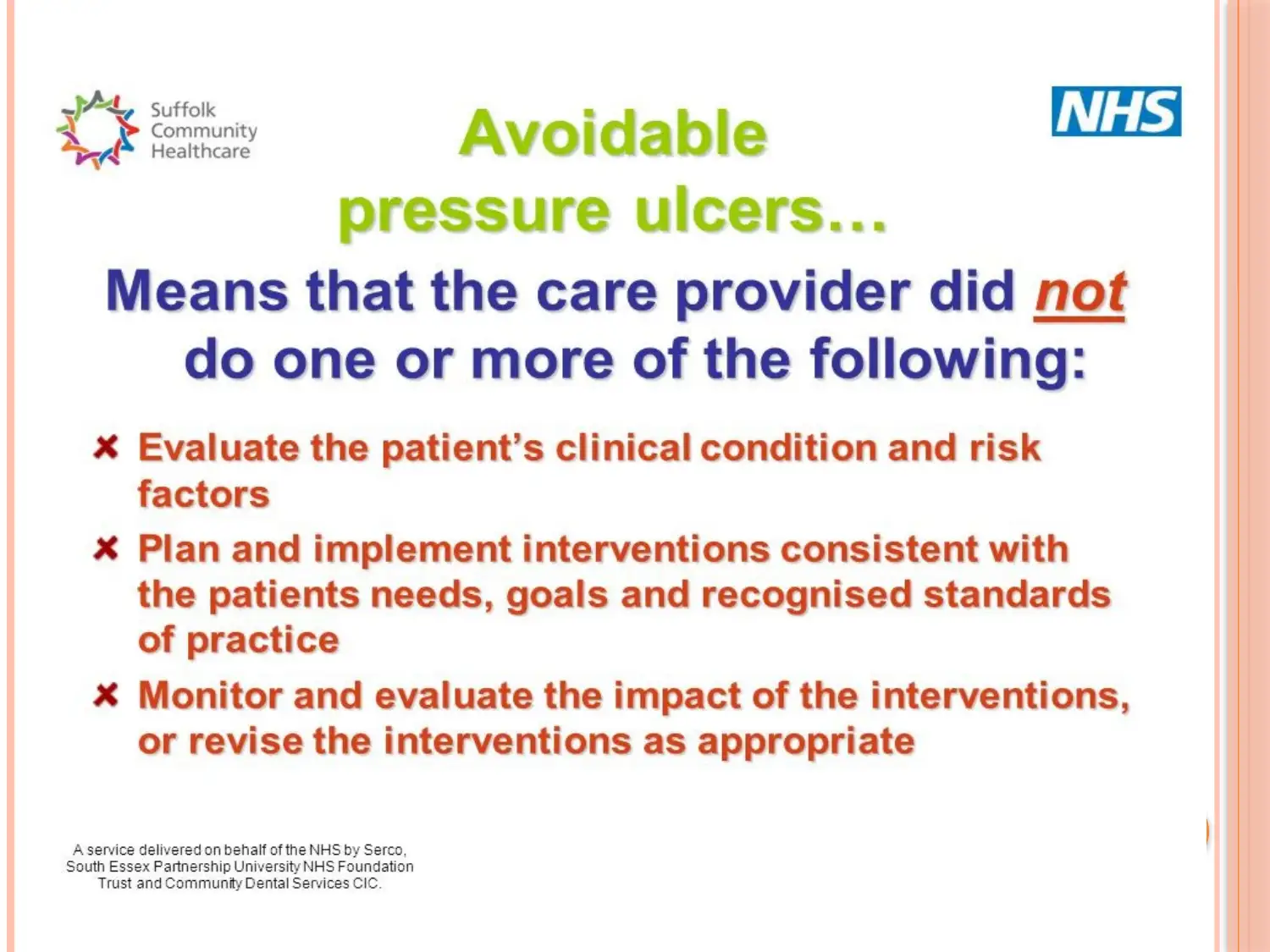
Paraphrase This Document
Need a fresh take? Get an instant paraphrase of this document with our AI Paraphraser
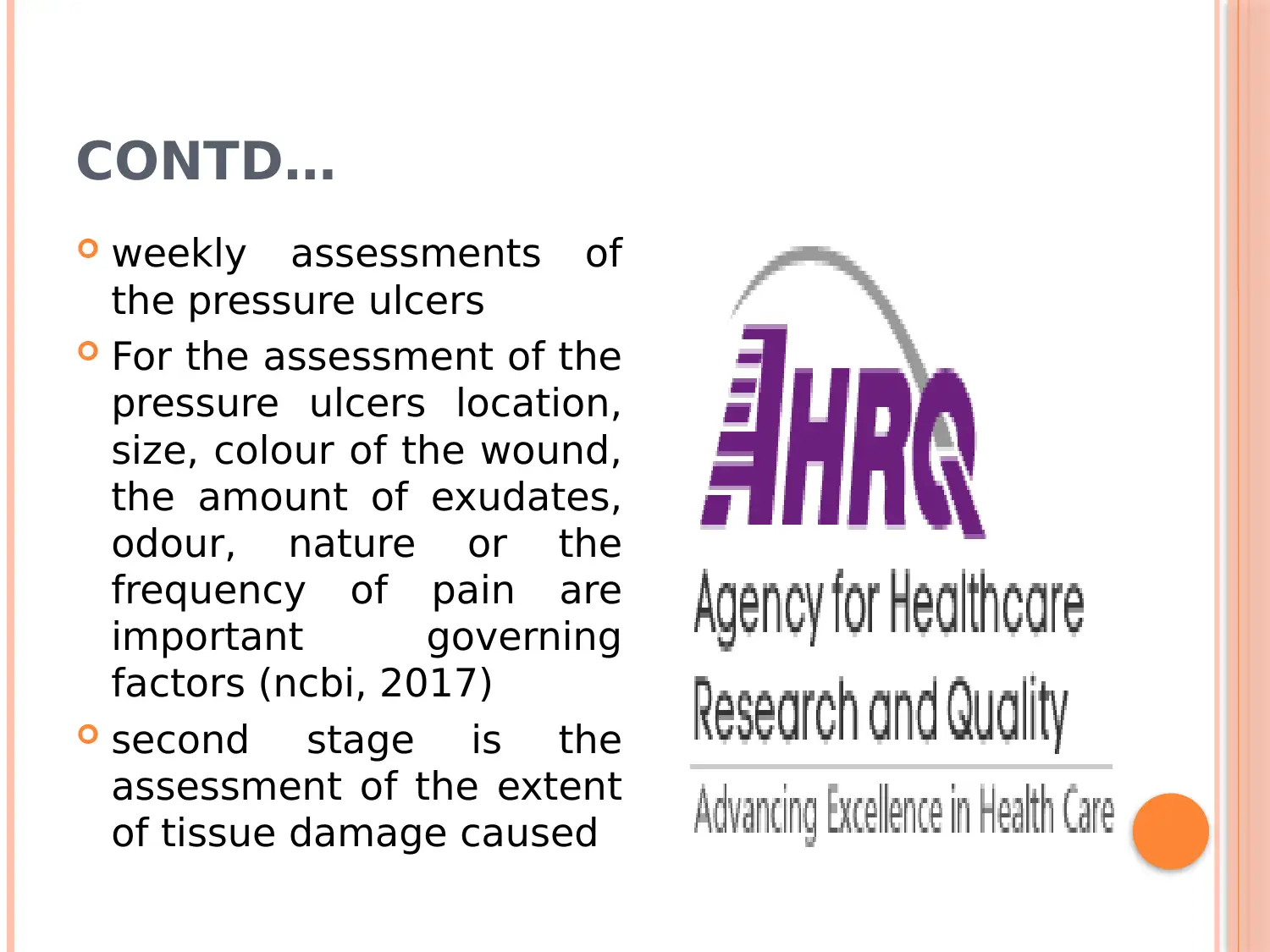
CONTD…
weekly assessments of
the pressure ulcers
For the assessment of the
pressure ulcers location,
size, colour of the wound,
the amount of exudates,
odour, nature or the
frequency of pain are
important governing
factors (ncbi, 2017)
second stage is the
assessment of the extent
of tissue damage caused
weekly assessments of
the pressure ulcers
For the assessment of the
pressure ulcers location,
size, colour of the wound,
the amount of exudates,
odour, nature or the
frequency of pain are
important governing
factors (ncbi, 2017)
second stage is the
assessment of the extent
of tissue damage caused
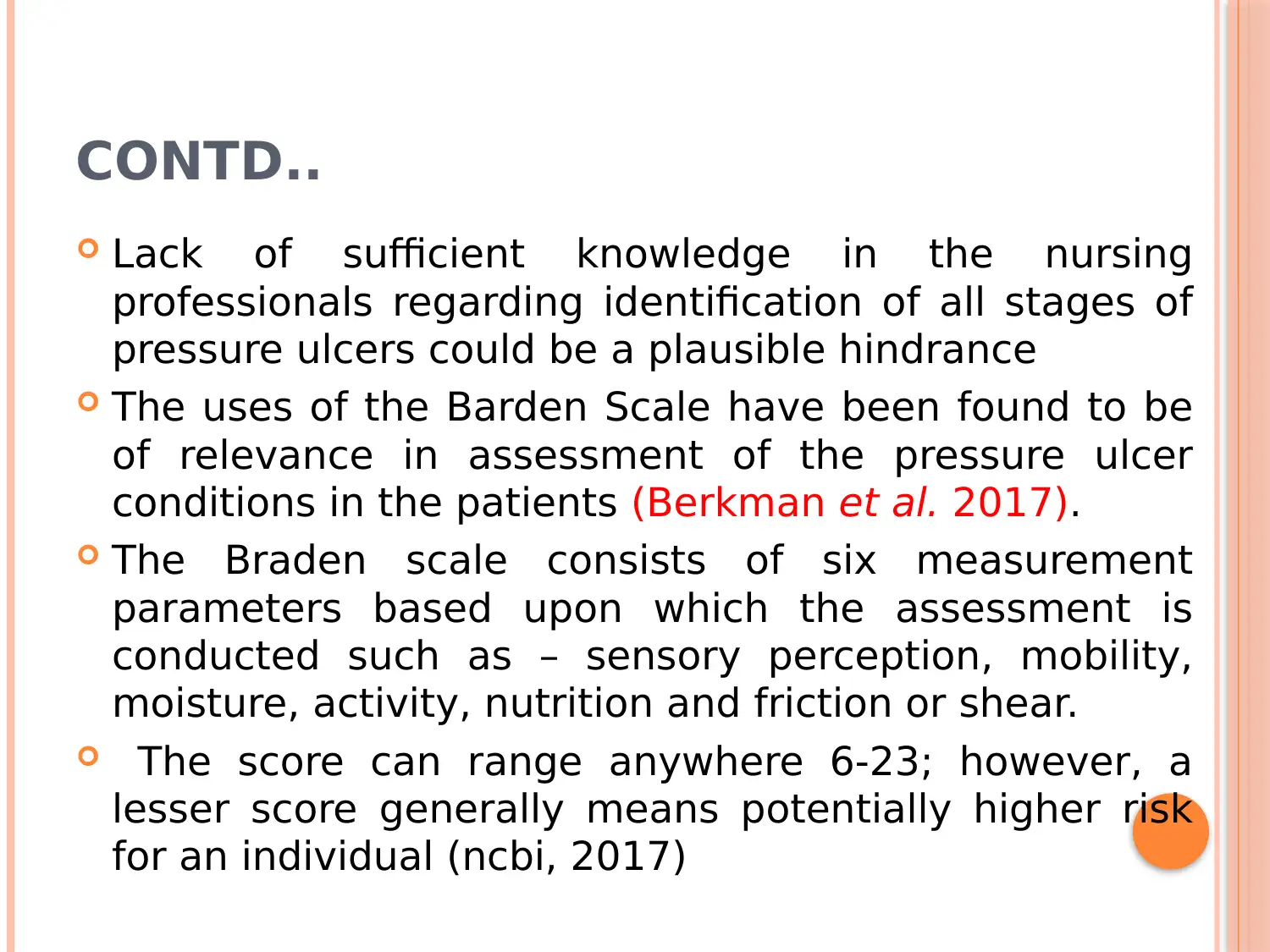
CONTD..
Lack of sufficient knowledge in the nursing
professionals regarding identification of all stages of
pressure ulcers could be a plausible hindrance
The uses of the Barden Scale have been found to be
of relevance in assessment of the pressure ulcer
conditions in the patients (Berkman et al. 2017).
The Braden scale consists of six measurement
parameters based upon which the assessment is
conducted such as – sensory perception, mobility,
moisture, activity, nutrition and friction or shear.
The score can range anywhere 6-23; however, a
lesser score generally means potentially higher risk
for an individual (ncbi, 2017)
Lack of sufficient knowledge in the nursing
professionals regarding identification of all stages of
pressure ulcers could be a plausible hindrance
The uses of the Barden Scale have been found to be
of relevance in assessment of the pressure ulcer
conditions in the patients (Berkman et al. 2017).
The Braden scale consists of six measurement
parameters based upon which the assessment is
conducted such as – sensory perception, mobility,
moisture, activity, nutrition and friction or shear.
The score can range anywhere 6-23; however, a
lesser score generally means potentially higher risk
for an individual (ncbi, 2017)
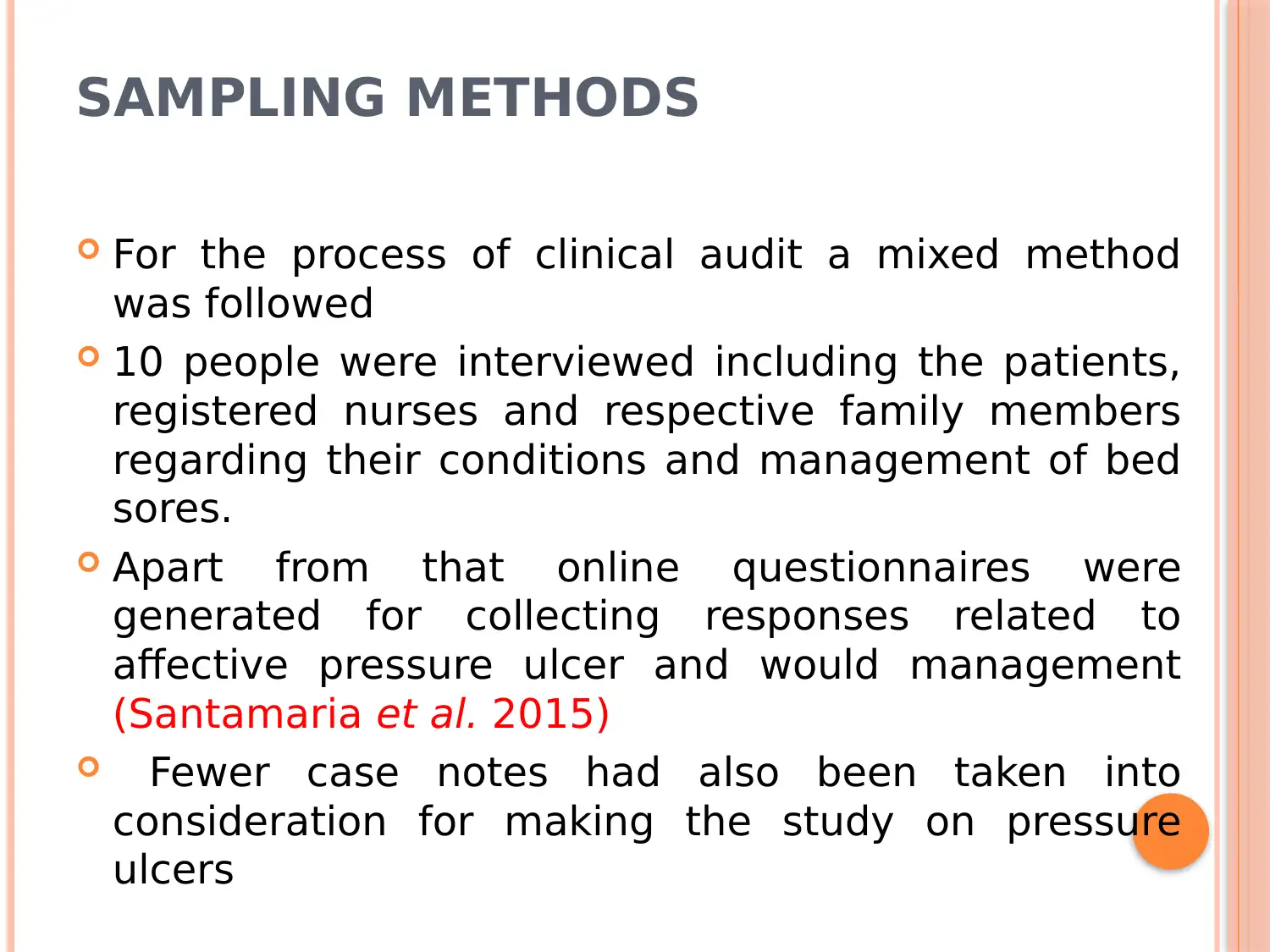
SAMPLING METHODS
For the process of clinical audit a mixed method
was followed
10 people were interviewed including the patients,
registered nurses and respective family members
regarding their conditions and management of bed
sores.
Apart from that online questionnaires were
generated for collecting responses related to
affective pressure ulcer and would management
(Santamaria et al. 2015)
Fewer case notes had also been taken into
consideration for making the study on pressure
ulcers
For the process of clinical audit a mixed method
was followed
10 people were interviewed including the patients,
registered nurses and respective family members
regarding their conditions and management of bed
sores.
Apart from that online questionnaires were
generated for collecting responses related to
affective pressure ulcer and would management
(Santamaria et al. 2015)
Fewer case notes had also been taken into
consideration for making the study on pressure
ulcers
Secure Best Marks with AI Grader
Need help grading? Try our AI Grader for instant feedback on your assignments.

CONTD..
qualitative assessment
was conducted in order
to analyse the responses
of the patient and their
respective families
the privacy norms also
needs to be maintained
during the process of
recording individual
patient responses (Pigott
et al. 2017).
qualitative assessment
was conducted in order
to analyse the responses
of the patient and their
respective families
the privacy norms also
needs to be maintained
during the process of
recording individual
patient responses (Pigott
et al. 2017).
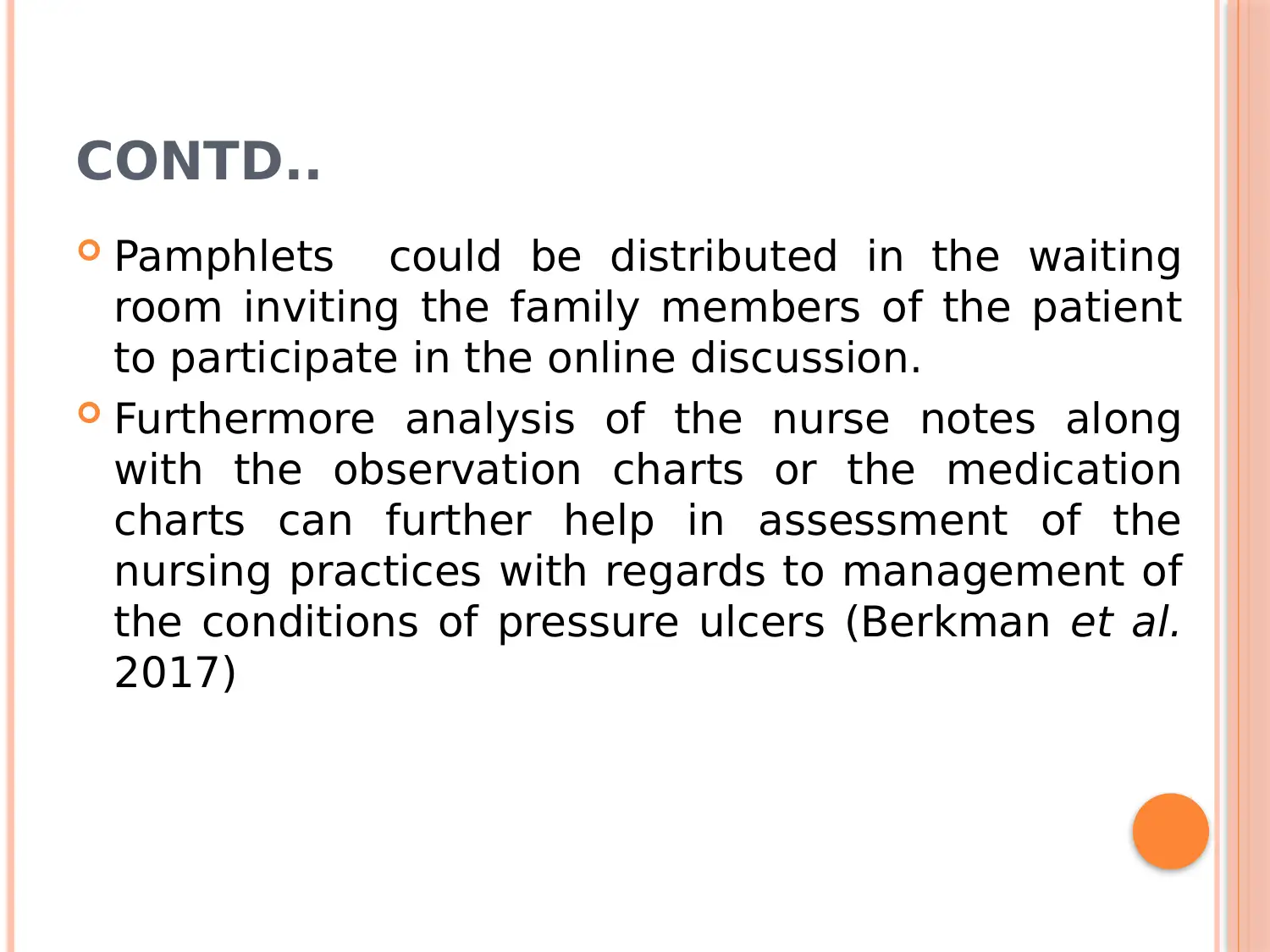
CONTD..
Pamphlets could be distributed in the waiting
room inviting the family members of the patient
to participate in the online discussion.
Furthermore analysis of the nurse notes along
with the observation charts or the medication
charts can further help in assessment of the
nursing practices with regards to management of
the conditions of pressure ulcers (Berkman et al.
2017)
Pamphlets could be distributed in the waiting
room inviting the family members of the patient
to participate in the online discussion.
Furthermore analysis of the nurse notes along
with the observation charts or the medication
charts can further help in assessment of the
nursing practices with regards to management of
the conditions of pressure ulcers (Berkman et al.
2017)
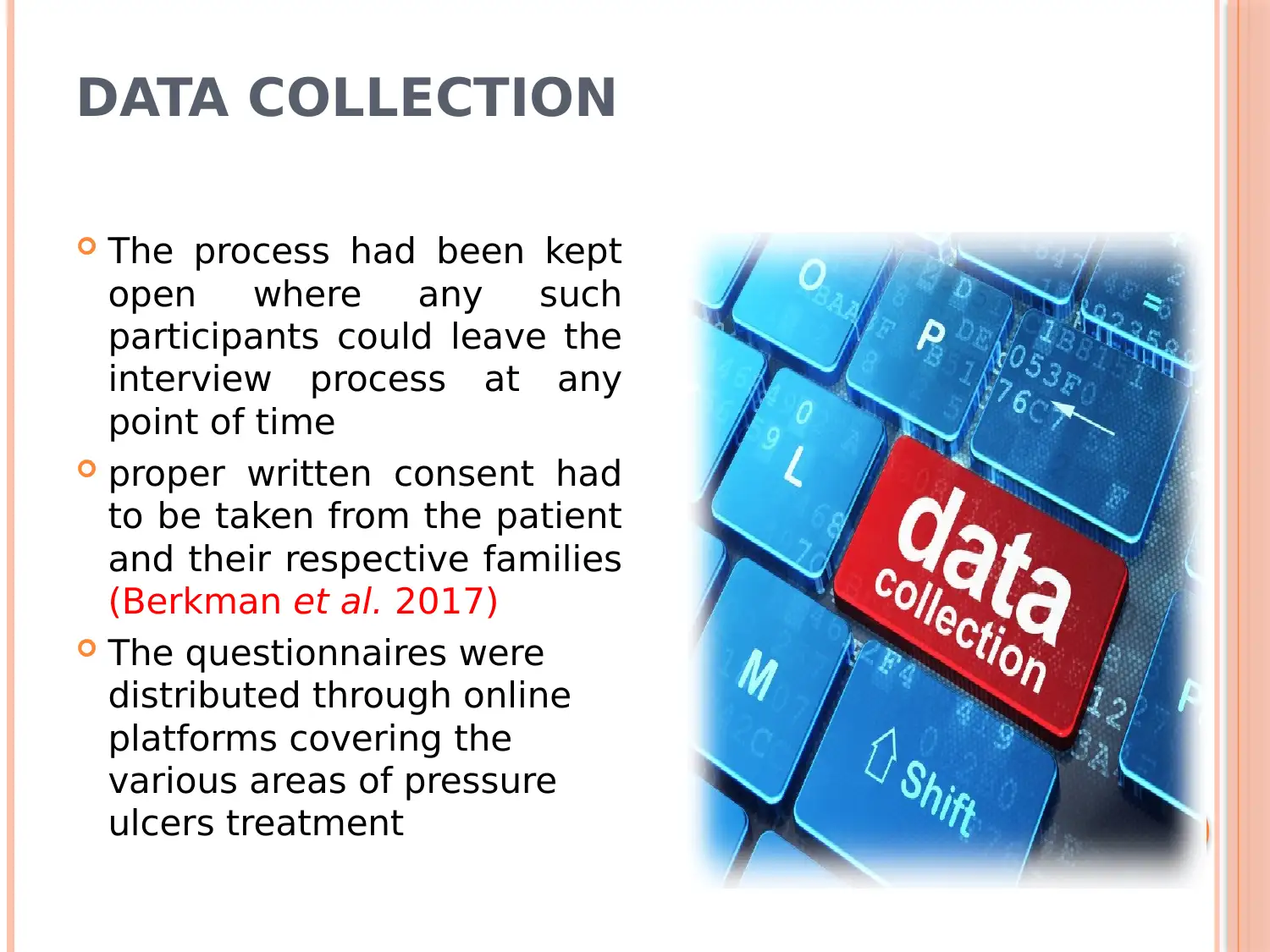
DATA COLLECTION
The process had been kept
open where any such
participants could leave the
interview process at any
point of time
proper written consent had
to be taken from the patient
and their respective families
(Berkman et al. 2017)
The questionnaires were
distributed through online
platforms covering the
various areas of pressure
ulcers treatment
The process had been kept
open where any such
participants could leave the
interview process at any
point of time
proper written consent had
to be taken from the patient
and their respective families
(Berkman et al. 2017)
The questionnaires were
distributed through online
platforms covering the
various areas of pressure
ulcers treatment
Paraphrase This Document
Need a fresh take? Get an instant paraphrase of this document with our AI Paraphraser
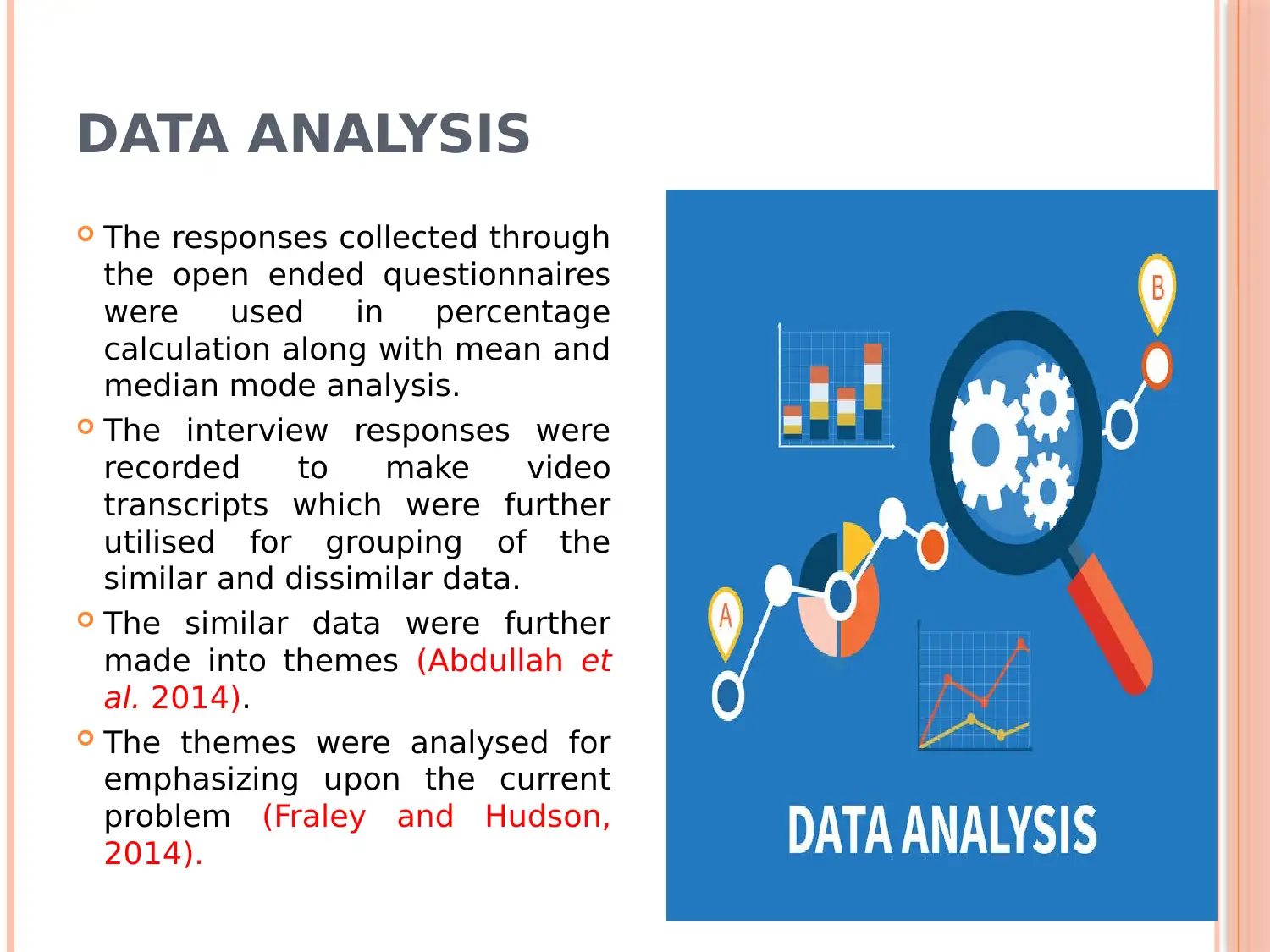
DATA ANALYSIS
The responses collected through
the open ended questionnaires
were used in percentage
calculation along with mean and
median mode analysis.
The interview responses were
recorded to make video
transcripts which were further
utilised for grouping of the
similar and dissimilar data.
The similar data were further
made into themes (Abdullah et
al. 2014).
The themes were analysed for
emphasizing upon the current
problem (Fraley and Hudson,
2014).
The responses collected through
the open ended questionnaires
were used in percentage
calculation along with mean and
median mode analysis.
The interview responses were
recorded to make video
transcripts which were further
utilised for grouping of the
similar and dissimilar data.
The similar data were further
made into themes (Abdullah et
al. 2014).
The themes were analysed for
emphasizing upon the current
problem (Fraley and Hudson,
2014).
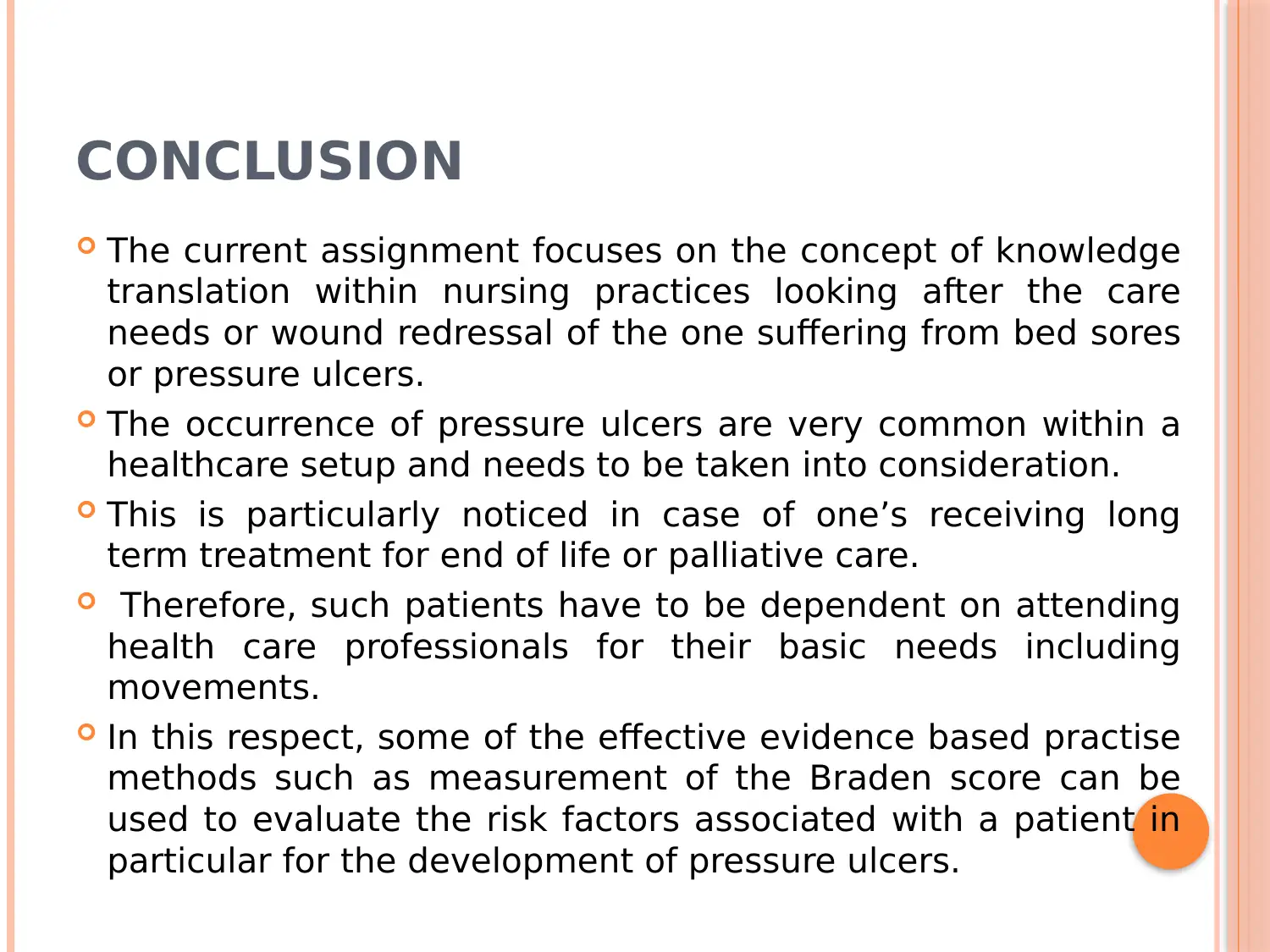
CONCLUSION
The current assignment focuses on the concept of knowledge
translation within nursing practices looking after the care
needs or wound redressal of the one suffering from bed sores
or pressure ulcers.
The occurrence of pressure ulcers are very common within a
healthcare setup and needs to be taken into consideration.
This is particularly noticed in case of one’s receiving long
term treatment for end of life or palliative care.
Therefore, such patients have to be dependent on attending
health care professionals for their basic needs including
movements.
In this respect, some of the effective evidence based practise
methods such as measurement of the Braden score can be
used to evaluate the risk factors associated with a patient in
particular for the development of pressure ulcers.
The current assignment focuses on the concept of knowledge
translation within nursing practices looking after the care
needs or wound redressal of the one suffering from bed sores
or pressure ulcers.
The occurrence of pressure ulcers are very common within a
healthcare setup and needs to be taken into consideration.
This is particularly noticed in case of one’s receiving long
term treatment for end of life or palliative care.
Therefore, such patients have to be dependent on attending
health care professionals for their basic needs including
movements.
In this respect, some of the effective evidence based practise
methods such as measurement of the Braden score can be
used to evaluate the risk factors associated with a patient in
particular for the development of pressure ulcers.
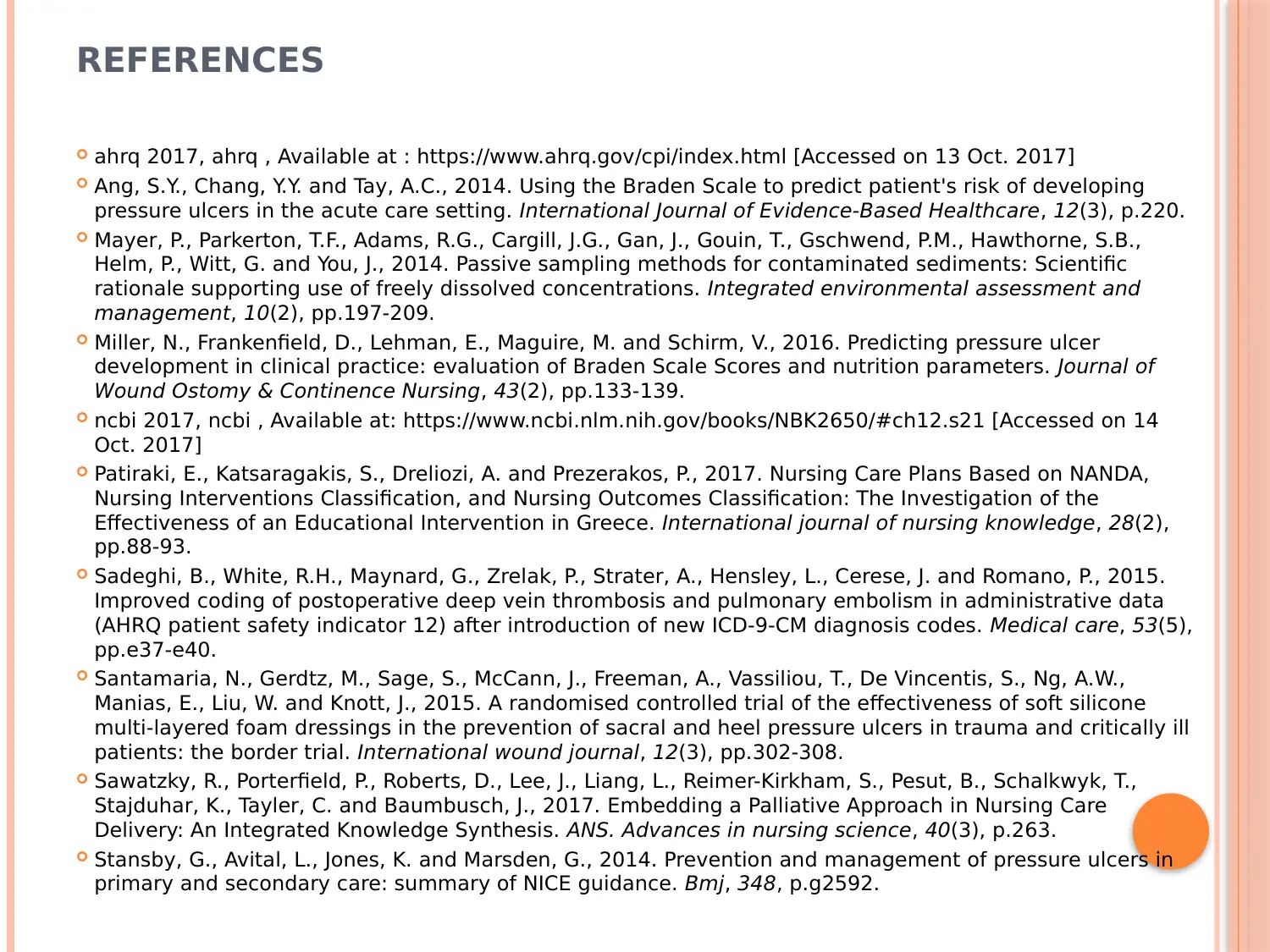
REFERENCES
ahrq 2017, ahrq , Available at : https://www.ahrq.gov/cpi/index.html [Accessed on 13 Oct. 2017]
Ang, S.Y., Chang, Y.Y. and Tay, A.C., 2014. Using the Braden Scale to predict patient's risk of developing
pressure ulcers in the acute care setting. International Journal of Evidence-Based Healthcare, 12(3), p.220.
Mayer, P., Parkerton, T.F., Adams, R.G., Cargill, J.G., Gan, J., Gouin, T., Gschwend, P.M., Hawthorne, S.B.,
Helm, P., Witt, G. and You, J., 2014. Passive sampling methods for contaminated sediments: Scientific
rationale supporting use of freely dissolved concentrations. Integrated environmental assessment and
management, 10(2), pp.197-209.
Miller, N., Frankenfield, D., Lehman, E., Maguire, M. and Schirm, V., 2016. Predicting pressure ulcer
development in clinical practice: evaluation of Braden Scale Scores and nutrition parameters. Journal of
Wound Ostomy & Continence Nursing, 43(2), pp.133-139.
ncbi 2017, ncbi , Available at: https://www.ncbi.nlm.nih.gov/books/NBK2650/#ch12.s21 [Accessed on 14
Oct. 2017]
Patiraki, E., Katsaragakis, S., Dreliozi, A. and Prezerakos, P., 2017. Nursing Care Plans Based on NANDA,
Nursing Interventions Classification, and Nursing Outcomes Classification: The Investigation of the
Effectiveness of an Educational Intervention in Greece. International journal of nursing knowledge, 28(2),
pp.88-93.
Sadeghi, B., White, R.H., Maynard, G., Zrelak, P., Strater, A., Hensley, L., Cerese, J. and Romano, P., 2015.
Improved coding of postoperative deep vein thrombosis and pulmonary embolism in administrative data
(AHRQ patient safety indicator 12) after introduction of new ICD-9-CM diagnosis codes. Medical care, 53(5),
pp.e37-e40.
Santamaria, N., Gerdtz, M., Sage, S., McCann, J., Freeman, A., Vassiliou, T., De Vincentis, S., Ng, A.W.,
Manias, E., Liu, W. and Knott, J., 2015. A randomised controlled trial of the effectiveness of soft silicone
multi‐layered foam dressings in the prevention of sacral and heel pressure ulcers in trauma and critically ill
patients: the border trial. International wound journal, 12(3), pp.302-308.
Sawatzky, R., Porterfield, P., Roberts, D., Lee, J., Liang, L., Reimer-Kirkham, S., Pesut, B., Schalkwyk, T.,
Stajduhar, K., Tayler, C. and Baumbusch, J., 2017. Embedding a Palliative Approach in Nursing Care
Delivery: An Integrated Knowledge Synthesis. ANS. Advances in nursing science, 40(3), p.263.
Stansby, G., Avital, L., Jones, K. and Marsden, G., 2014. Prevention and management of pressure ulcers in
primary and secondary care: summary of NICE guidance. Bmj, 348, p.g2592.
ahrq 2017, ahrq , Available at : https://www.ahrq.gov/cpi/index.html [Accessed on 13 Oct. 2017]
Ang, S.Y., Chang, Y.Y. and Tay, A.C., 2014. Using the Braden Scale to predict patient's risk of developing
pressure ulcers in the acute care setting. International Journal of Evidence-Based Healthcare, 12(3), p.220.
Mayer, P., Parkerton, T.F., Adams, R.G., Cargill, J.G., Gan, J., Gouin, T., Gschwend, P.M., Hawthorne, S.B.,
Helm, P., Witt, G. and You, J., 2014. Passive sampling methods for contaminated sediments: Scientific
rationale supporting use of freely dissolved concentrations. Integrated environmental assessment and
management, 10(2), pp.197-209.
Miller, N., Frankenfield, D., Lehman, E., Maguire, M. and Schirm, V., 2016. Predicting pressure ulcer
development in clinical practice: evaluation of Braden Scale Scores and nutrition parameters. Journal of
Wound Ostomy & Continence Nursing, 43(2), pp.133-139.
ncbi 2017, ncbi , Available at: https://www.ncbi.nlm.nih.gov/books/NBK2650/#ch12.s21 [Accessed on 14
Oct. 2017]
Patiraki, E., Katsaragakis, S., Dreliozi, A. and Prezerakos, P., 2017. Nursing Care Plans Based on NANDA,
Nursing Interventions Classification, and Nursing Outcomes Classification: The Investigation of the
Effectiveness of an Educational Intervention in Greece. International journal of nursing knowledge, 28(2),
pp.88-93.
Sadeghi, B., White, R.H., Maynard, G., Zrelak, P., Strater, A., Hensley, L., Cerese, J. and Romano, P., 2015.
Improved coding of postoperative deep vein thrombosis and pulmonary embolism in administrative data
(AHRQ patient safety indicator 12) after introduction of new ICD-9-CM diagnosis codes. Medical care, 53(5),
pp.e37-e40.
Santamaria, N., Gerdtz, M., Sage, S., McCann, J., Freeman, A., Vassiliou, T., De Vincentis, S., Ng, A.W.,
Manias, E., Liu, W. and Knott, J., 2015. A randomised controlled trial of the effectiveness of soft silicone
multi‐layered foam dressings in the prevention of sacral and heel pressure ulcers in trauma and critically ill
patients: the border trial. International wound journal, 12(3), pp.302-308.
Sawatzky, R., Porterfield, P., Roberts, D., Lee, J., Liang, L., Reimer-Kirkham, S., Pesut, B., Schalkwyk, T.,
Stajduhar, K., Tayler, C. and Baumbusch, J., 2017. Embedding a Palliative Approach in Nursing Care
Delivery: An Integrated Knowledge Synthesis. ANS. Advances in nursing science, 40(3), p.263.
Stansby, G., Avital, L., Jones, K. and Marsden, G., 2014. Prevention and management of pressure ulcers in
primary and secondary care: summary of NICE guidance. Bmj, 348, p.g2592.
1 out of 16
Related Documents
Your All-in-One AI-Powered Toolkit for Academic Success.
+13062052269
info@desklib.com
Available 24*7 on WhatsApp / Email
![[object Object]](/_next/static/media/star-bottom.7253800d.svg)
Unlock your academic potential
© 2024 | Zucol Services PVT LTD | All rights reserved.





